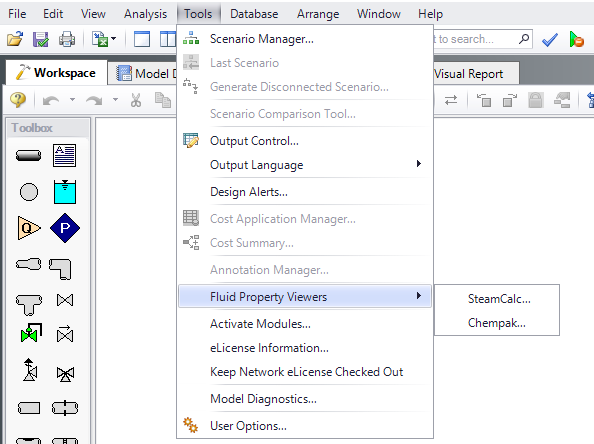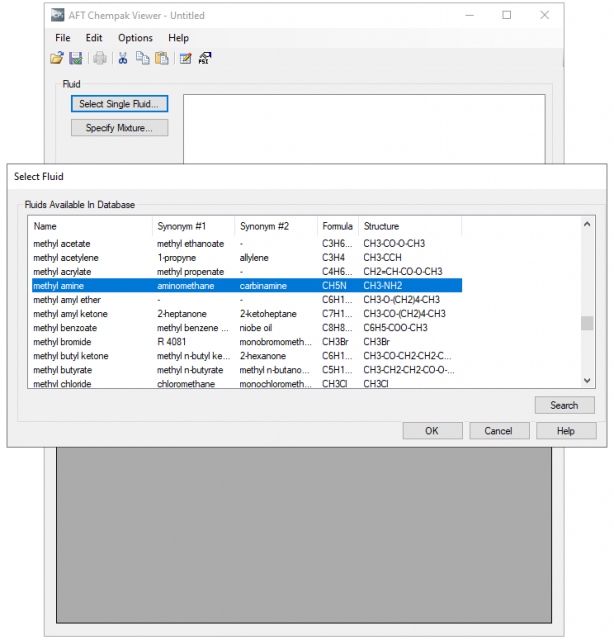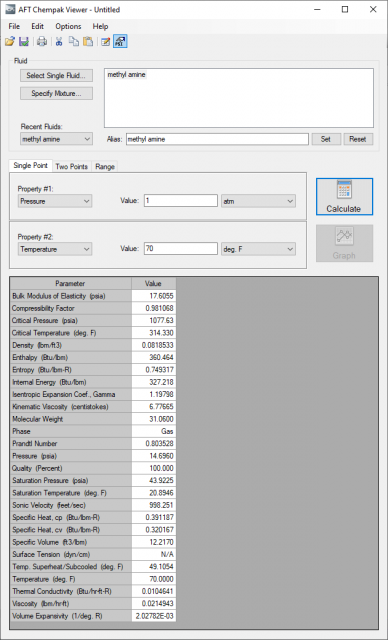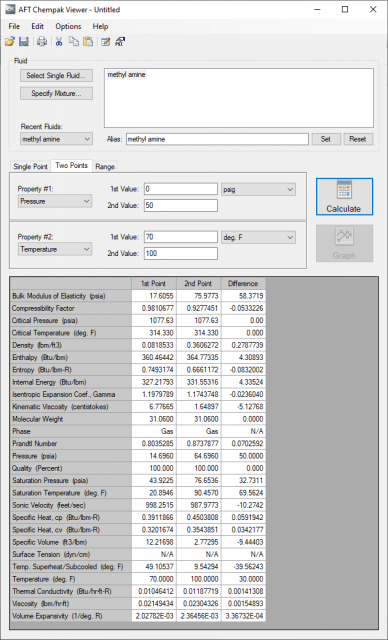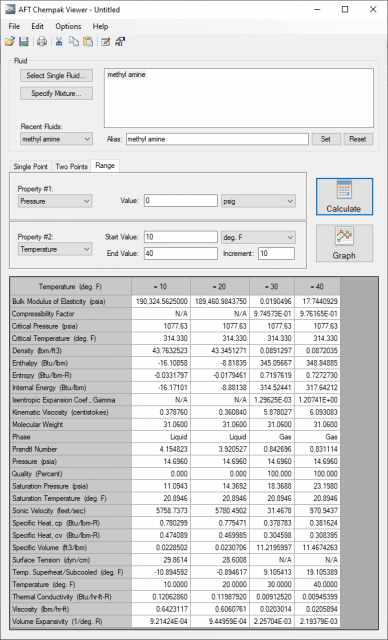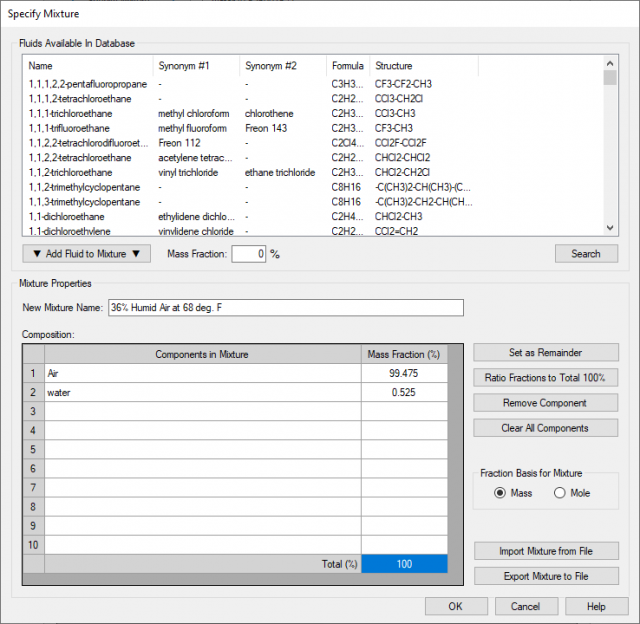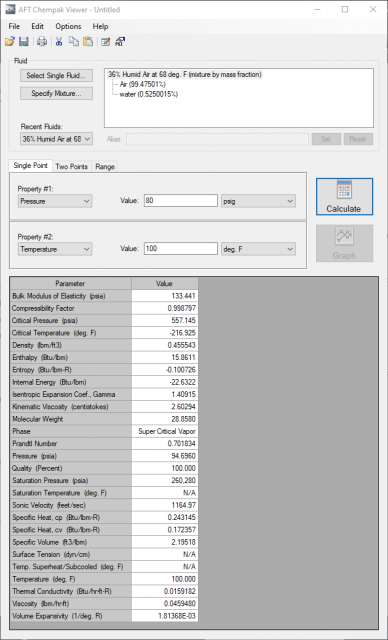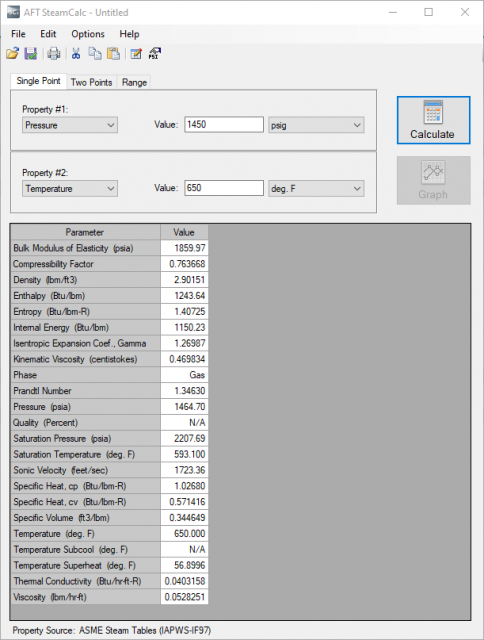Veteran AFT software users are familiar with heritage products like AFT SteamCalc and AFT Chempak Viewer. Some have wondered where these products went. Although licenses to these products are no longer sold, these viewers are now integrated into the main applications for each of AFT's main products: AFT Fathom, AFT Arrow, AFT Impulse, and AFT xStream. In this blog, I discuss how to open and use the integrated AFT Chempak Viewer and AFT SteamCalc.
Anyone with a license to at least one of the four AFT applications can access AFT SteamCalc. However, a Chempak Database license is required to use AFT Chempak Viewer in addition to a license to the main application.
Open the viewers from any applications
Open AFT SteamCalc and AFT Chempak Viewer easily from any main application. No additional installation is required to use the viewers (although additional installation is needed to use Chempak in general). From the Tools menu at the top, go to Fluid Property Viewers and select the viewer you wish to open, as shown in Figure 1.
AFT Chempak Viewer
With a Chempak license, do more than just use the fluid property database for flow modeling. Use the Chempak viewer to calculate mixture properties beyond the properties required for flow calculations. AFT Fathom and AFT Arrow use and output only fluid properties needed for flow analysis, such as temperature, pressure, density, and specific heat. There are more than double the number of fluid properties available in AFT Chempak Viewer than what is shown and used in AFT Fathom and AFT Arrow.
To see these properties, open AFT Chempak Viewer and click Select Single Fluid to choose from the nearly 700 fluids available in the Chempak database. Use the Search feature to search for the fluid by name. You can also search for fluids by commonly used names – many fluids have three names listed to help you find the fluid you are looking for much easier.
For example, say you want to view the fluid properties of methyl amine (any Breaking Bad fans out there?). You can find this fluid using the Search feature or scrolling down the alphabetical list looking for any of its three names: methyl amine, aminomethane, or carbinamine, shown in Figure 2. The formula and structure are also listed to help confirm this is the fluid you are looking for.
After selecting the fluid, enter any two property values, such as pressure and temperature, but you can also use density, enthalpy, entropy, internal energy, quality, saturated liquid, saturated vapor, or specific volume. Click Calculate to view the properties of this fluid at the conditions you specified. Adjust the units and properties shown in the output from the Output Control window. Figure 3 below displays all available output parameters.
Instead of specifying a single point, you can specify two different conditions on the Two Points tab and Chempak Viewer will calculate the properties at both points plus the difference between those two points. For example, determine the difference in Bulk Modulus of Elasticity for methyl amine at 0 psig and 70 deg. F and at 50 psig and 100 deg. F.
With this feature, you can easily see that the difference in Bulk Modulus of Elasticity at these two conditions is 58 psia, as shown in Figure 4.
Perhaps you are not sure what two points you want to use and instead would like to know the properties across a range of conditions. On the Range tab, you can do just that. Specify one property to hold constant, such as pressure, then select a second property, start value, end value, and increment to calculate the properties and each incremental point in the range you selected. For example, get the properties of methyl amine at 0 psig and temperatures ranging from 10 to 40 deg. F in increments of 10 degrees, as shown below in Figure 5. You can also graph any property to get a visual representation of the fluid property behavior in the range.
Finally, it is not uncommon to have a mixture of different fluids. Create mixtures, get the properties of those mixtures, and save those mixtures for use in a model later. For example, say you have a mixture of air and water: 36% relative humidity at 68 deg. F (99.475 mass percent air and 0.525 mass percent water). Click Specify Mixture, enter the mixture components, and export the mixture to file for use later - see Figure 6.
The same fluid properties for a single point, two points, or range can be calculated for mixtures. Enter the conditions of the mixtures to see all the properties of that mixture, shown in Figure 7.
AFT SteamCalc
With AFT SteamCalc, calculate steam properties at any available condition. Unlike AFT Chempak Viewer, no special license is required to use AFT SteamCalc. Any user with a license to a main application can use it. The interface is very similar to AFT Chempak Viewer: enter the conditions at a single point, two points, or a range to get the steam properties. It uses the ASME Steam Tables to calculate the properties of steam based on the specified conditions.
For example, determine how much superheat is in steam at 1450 psig and 650 deg. F. Enter these two conditions and click Calculate to view the properties, as shown in the figure below. Note, all output parameters were added to the output using the Output Control window.
As you can see in Figure 8, there are 56.9 deg. F of superheat in steam at the specified conditions.
The Two Points and Range tabs work the exact same as in the AFT Chempak Viewer described above.
Conclusion
With the integration of AFT Chempak Viewer and AFT SteamCalc into the main AFT applications, get the fluid properties you need for all countless fluids and mixtures without any additional installation or hassle.
